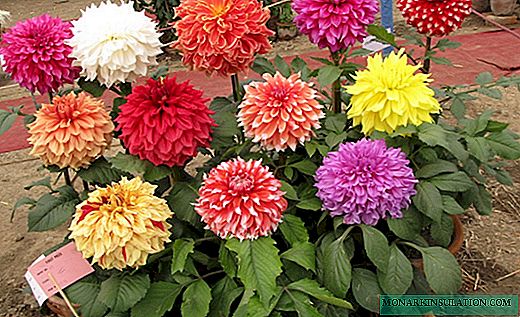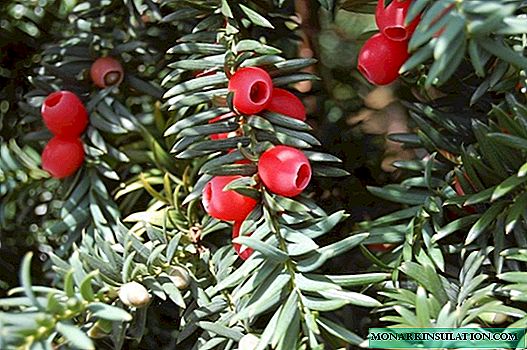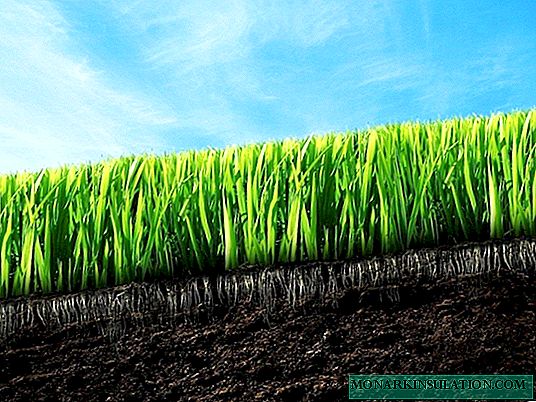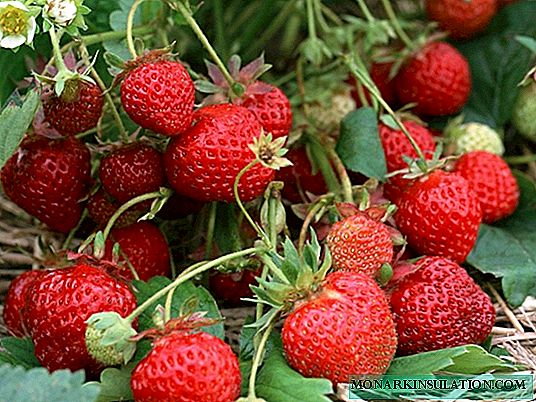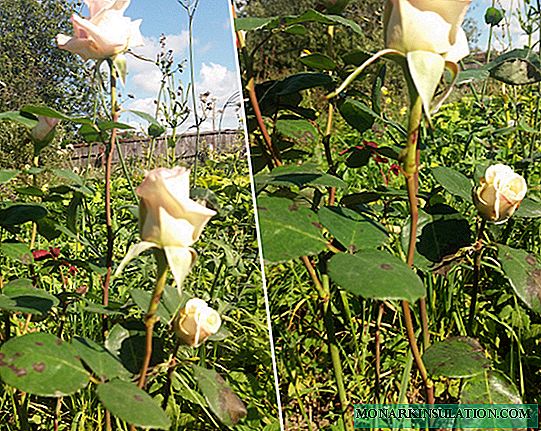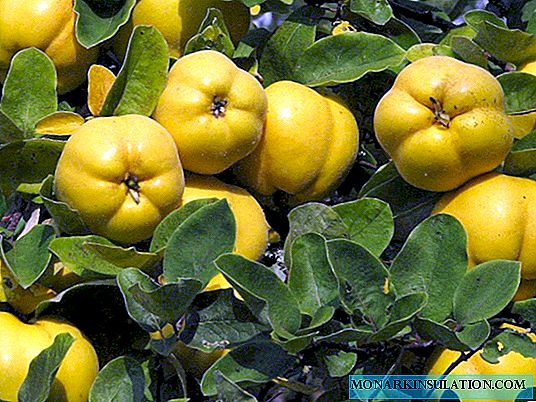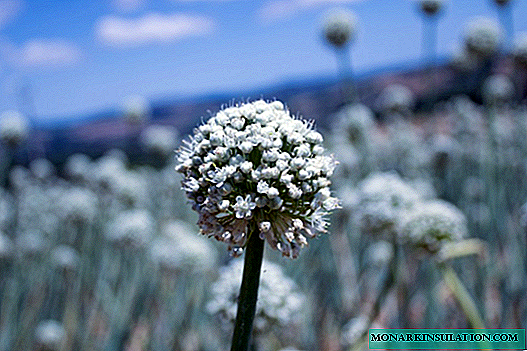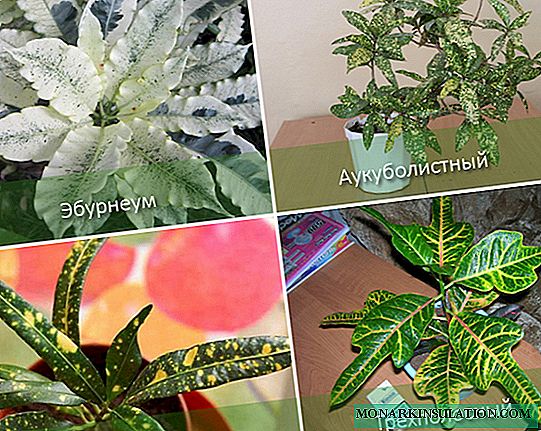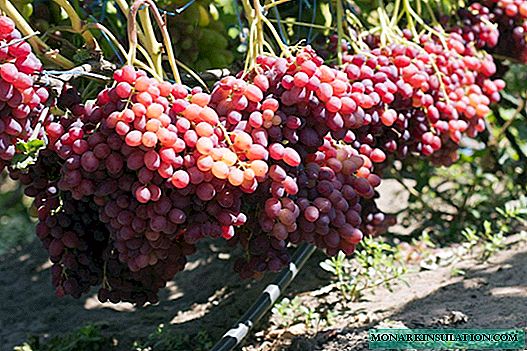
Beloved by many gardeners, grapes already number many varieties, nevertheless, breeders around the world continue to develop new forms in the hope of obtaining even more delicious and fruitful plants. One example of successful breeding work is the Ukrainian hybrid Veles, combining the tenderness of raisins and the aroma of nutmeg.
History of Veles grape cultivation
Veles hybrid seedless grape appeared due to the efforts of Ukrainian amateur breeder V.V. Zagorulko (Zaporozhye). The "parents" of the hybrid are the varieties Rusbol and Sofia.
The variety is still very young - the author began selling it to other lovers in October 2009. A new hybrid is not yet listed in the state registry, therefore information on its qualities can be obtained only from the description given by the author and reviews from amateur winegrowers.
In 2010, the Veles hybrid was put up for the Golden Grapes International Competition (Simferopol) and received two gold medals at once.
Currently, Veles is cultivated by winegrowers of Ukraine, Belarus and Russia.
Growing Veles grapes in Belarus - video
Variety description Veles
Veles is a hybrid characterized by a very early ripening period (the crop ripens 95-100 days after the start of the growing season). The vines grow at high speed and mature perfectly (almost along the entire length).
The flowers formed on the vegetative shoots are bisexual (they contain both stamens and pistils). Despite the ability to self-pollination, additional pollination is recommended to increase productivity (yield increase can be up to 20%).
Steps are usually formed on the fruit shoots, which are capable of producing a second wave of harvest in October in suitable weather.

The mass of clusters can reach 3 kilograms
Conical or cylindrical branching clusters impress with their size (weight can reach 2 kg, maximum recorded - 3 kg). The cluster structure is loose or medium dense. Oval-shaped berries are covered with pink skin and have an average weight of 4.5-5 g.

The berries are oval and pink with a reddish "tan"
The peel has an average thickness, but is not felt when eating. Juicy pulp is quite dense, with a strongly noticeable muscat aroma. Although the variety is considered seedless, rudiments of seeds are sometimes formed in the berries, and their number depends on weather conditions. Rudiments are soft and do not interfere with eating berries.
Description of Veles grape - video
Variety Characteristics
Hybrid Veles has a number of positive qualities:
- high stable yield (6-7 kg from 1 bush);
- unusual taste and aesthetic appearance of berries;
- high resistance to fungal diseases (for example, mildew and oidimum);
- good transportability;
- good preservation of berries on the bush (in dry weather, the brushes naturally turn into raisins and stay on the vine for up to 1.5 months).
Disadvantages:
- average frost resistance (tolerates a drop in temperature to -21 ° C) - in cold regions it needs shelter for the winter;
- berries can crack and rot in wet conditions.
Planting and growing grapes Veles
To ensure high yields of Veles grapes, proper planting and proper care are necessary.
Grape planting
Hybrid Veles is unpretentious and successfully grown in any way except sowing seeds. It is best to plant and plant grapes in the spring (in March-May, depending on the climate of the region) - by the next winter it will have time to grow stronger. Most quickly, a new bush will begin to bear fruit when vaccinated on an old stock. For this, mature cuttings with 2-3 eyes are harvested in advance (in autumn), the section is waxed, wrapped in polyethylene and stored in the refrigerator until spring.

Vaccination with green cuttings is carried out in a split rootstock
In the spring, the grape rootstock bush is cut, leaving a small stump with a smooth, peeled surface. The cuttings, previously trimmed with a wedge and soaked in water, are carefully placed in a split made strictly in the center of the stump-stock;

Vaccination sites should be tightly tied so that the slices can grow together quickly
For those who are afraid or do not want to be vaccinated, you can use the method of planting seedlings. To do this, prepare healthy cuttings with 4-5 buds and in mid-February put them in water or plant them in moist soil, so that by the time of planting the cuttings give roots.

Vingograd cuttings quickly give root if put in a jar of water
It is desirable to plant Veles grapes in nutritious soil that is well permeable to moisture, best of all - in chernozem. Areas with stagnant moisture and marshy soil for grapes are absolutely not suitable. The landing site should be well warmed up by the sun.
Since the bushes of Veles are quite large, they need considerable space for normal development. The distance between adjacent bushes should be at least 1.5-2 m, and 3-4 m from trees and buildings.

When planting on moist, dense soils, drainage must be ensured
The pit is prepared 2-3 weeks before planting (depth and diameter 0.8 m). A mixture of soil with humus and phosphorus-potassium fertilizers is poured at the bottom of it, which is covered with a layer of clean earth (3-4 cm). Before planting, grape seedlings are dipped in a growth stimulator (for example, Humate at a concentration of 0.5 mg / l).
When planting, you need to be very careful not to break off the fragile side roots (they are characterized by white color). The root system is thoroughly covered with soil, compacted, watered with 2-3 buckets of water and mulched with sawdust.
Planting grapes on video
Grape care
Hybrid Veles requires the same care as other grape varieties.
The soil under the grape bush should be moderately moist all the time, so watering should be carried out regularly, although not too often. The need for moisture is especially high during the period of leaflet blooming, flowering and the formation of brushes, as well as after harvesting.
When watering grapes, it is necessary to remember moderation: waterlogging causes cracking and decay of berries.
To preserve moisture in the soil, it is recommended to cover the soil in the near-stem circle with a layer of mulch (3-4 cm) from straw, sawdust and or peat. You can use humus, in which case the mulch serves as fertilizer at the same time.
Grape Formation - Video
The formation of the Veles bush is usually carried out with a fan in 4 sleeves. The form is supported by regular spring and autumn pruning. In spring, it is recommended to carry out medium pruning, leaving 6-8 eyes on each vine, so that the total load on the bush is 25-32 eyes (maximum 35). Veles has a high ability to form stepsons. In the middle lane it is recommended to break them out. In the southern regions, stepsons are left, since clusters are also formed on them. In warm autumn weather, they have time to ripen by mid-October, although, of course, the berries of the second crop are smaller and more acidic than the first.

Fan formation of a grape bush takes about 3 years
Supports for grapes are usually made in the form of trellises, although other options are possible (single supports, arches).
Supports for grapes - photo gallery

- Double trellis allows you to get a larger crop, as the number of sleeves on the bush increases

- The formation of grapes on the arch allows you to create comfortable shady canopies and arbors

- Single trellis - the simplest and most common type of support
In the fall, the vine bush is cut, removing unripe parts of the vine and extra shoots.
In cold regions, grapes necessarily require shelter for the winter, as it does not tolerate frosts below -21 ° C. The vines bound in bunches are laid on the ground and tied with straw, dry corn stalks, and polyethylene.

The vines laid on the ground must be carefully tied with insulation material
Grapes respond well to fertilizing. If organics can be applied in the form of a mulching layer, then mineral fertilizers must be given together with irrigation water. Particularly important are phosphorus-potassium fertilizers, as well as the periodic introduction of trace elements - iron, zinc, boron.
If you give fertilizers to grapes before flowering, then it will not bring benefits, but will go on building green mass.
Veles has medium resistance to defeat by false and powdery mildew (mildew and oidium). It follows from the author’s description that Veles’s resistance to these diseases is estimated at 3.5 points. Nevertheless, it is desirable to carry out 2-3 preventative treatments with fungicides (Bordeaux mixture, colloidal sulfur).
As grapes ripen early, they are usually attacked by wasps. To combat them, you can use traps containing a honey solution with insecticides, or tie each brush with a mesh or fabric bag. The latter method will help to save berries from birds.

If you do not spare the time and tie each bunch in a bag of mesh or fabric, you will get the harvest completely
Harvesting, storage and use of crops
You can start harvesting Veles at the beginning of August (sometimes at the end of July). In the southern regions with a long warm autumn, you can wait for the second harvest (in October). True, the berries of the second harvest are much smaller and not so tasty.
The brushes hold on to the vines very firmly, so they must be cut off, and not broken off.
The elastic pulp and dense skin make Veles Berries resistant to transportation. Nevertheless, in order to less injure the crop, you need to fold the brushes in shallow boxes.

Delicious and healthy raisins can be made from Veles berries.
You can store the harvested grapes for about 3 months in a cool room. It is best to hang brushes on the twine stretched in the room.
Veles berries have a great taste and are intended for fresh consumption. You can also make wonderful raisins, preserves, compote or wine.
Reviews of winegrowers
Veles is growing and I, as Irina Ivanovna correctly noted, this form requires additional treatments from rotations Switch. I also want to note that the clusters are too large, reaching 3-4 kilograms, if you nip off half of the bunch in length or leave only a couple of side wings immediately after flowering, then there will be less rot and ripening of the berries will be even. So do not chase records, otherwise you can lose your crop.
Andrey Kurmaz//vinforum.ru/index.php?topic=191.0
I noticed that the hotter the summer, the larger the vestiges of Veles. Last summer was cool, so consider rudiments that weren’t. It seems to me that in the north this form will show itself from the best side, all the more so with raisins with nutmeg and there is no longer such an early date.
Evgeny Polyanin//vinforum.ru/index.php?topic=191.0
If I am not mistaken, Veles received a gold medal at the competition "Golden bunch of grapes 2010" in Simferopol. (complete coincidence of tastes and ratings of the people's tasting commission and professional)
Svetlana//www.vinograd7.ru/forum/viewtopic.php?t=2299
K-sh Veles planted with a seedling in 2010 In the second year he gave the first signal crop. Of the 4 clusters, I left 3. I treated one of them with gibberelin 1 time (I processed Gift Zaporozhy with a concentration of 30 mg per liter). Untreated 2 clusters were large, up to about 1 kg. The berries were medium in size, very tasty, with nutmeg. The rudiments were, but were soft and almost not felt when eating berries. And on that bunch that I processed 1 time, the berries were larger, and there were no rudiments at all.
Anatoly Savran//www.vinograd7.ru/forum/viewtopic.php?t=2299
Veles will bring gardeners a lot of pleasure with its pleasant taste and excellent productivity. Plants do not require special care, you only need to cover them for the winter and protect the crop from wasps.




